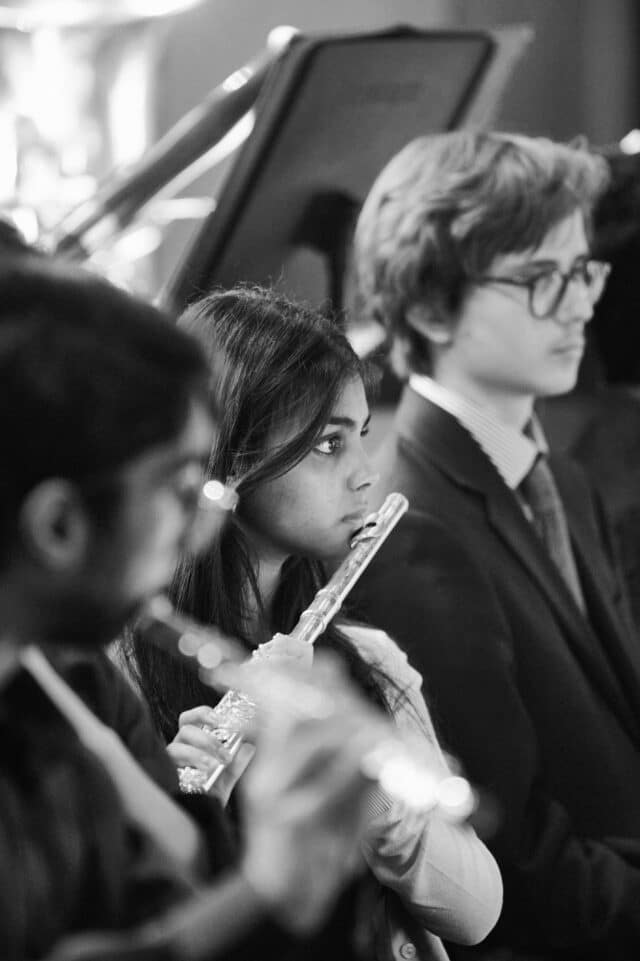It might sound strange from a Director of Innovation, but for me this week has really been about music, performance and creativity. Perhaps this is unsurprising in a week where the calendar was so full of amazing musical events, across both schools.
On Monday, I spoke to our Girls’ Senior School about imagination, originality, creativity, and why developing these qualities matters so much for the future. I shared with the girls my fascination with etymology: the words ‘music’ and ‘museum’ both come from the ancient Greek concept of the muse. To engage in music or enter a museum means literally to be “taken by the muse”.
I was reminded of this when watching the dress rehearsal for the Girls’ Junior School’s Spring Concert. The Wind Orchestra tackled Holst’s Mars: The Bringer of War from The Planet Suite with power and energy while a student visual artist improvised using an iPad, taking us from squiggles, zooming in, adding tone, until the screen was transformed into a dramatic scene from space, Mars looming in the corner.

Creativity is a vital skill for the future. The World Economic Forum’s Future of Jobs Report 2025 lists creativity number 4 in the skills needed for future jobs. More than this, creativity is an ability that is under comparatively little threat from AI.
Yes, AI can produce images, videos and songs. It can replicate in a new way, based on a large dataset. It is excellent at pastiche, but I like to think that to create – to originate – entails some kind of intentionality.
I start to think about this as I write. I go to office.com. I click ‘create new’. How often, I wonder, do we really go out of our way to create something new?
AI is predictive. It works effectively because so much of what we want is just more of the same. It can predict how that letter should be worded, because it’s one of those letters, or how that social media post should go, because it’s one of those social media posts. It is generative. It is not creative.
Creativity has a natural home in the visual and performing arts, but it should be recognised everywhere. The inventive way you solve a Maths problem. The example you come up with to make exactly the argumentative point you want to make. The designing of a difficult experiment. All of these entail creative thinking.
Having said this, the thing about live performance is that, though the words or notation might be on a page, a performance is made in the moment. Never was this better exemplified than in the extraordinary concert given by the combined Habs Elstree orchestras at St John’s Smith Square on Thursday night.

In a concert littered with highlights, for me the most extraordinary piece was Eric Whitacre’s Godzilla Eats Las Vegas!—a mad, extraordinary journey through shifting motifs and moods, each vividly telling a clear story.
As I watched this remarkable performance unfold, I was struck—very much like when I look up at the soaring vaults of a medieval cathedral—by the astonishing fact that something so intricate, ambitious and original could first take shape entirely within the imagination of one human mind, and without much of the technology we now take for granted. Whitacre’s tongue-in-cheek composition is almost entirely unlike a cathedral, but, like the architects’ visions centuries ago, is full of intricate, playful creativity and imagination. For me, this was a powerful reminder of what creativity truly looks like, and why it matters so deeply in education and beyond.
If we want our students to thrive in an age increasingly shaped by AI, we must deliberately cultivate imagination and originality—not just in music and art, but across every subject. Creativity needs a central place; it is what will enable our students not only to adapt to the future but also to shape it.

